Carl E. Olson's Blog, page 140
July 31, 2013
Ignatius of Loyola and Ideas of Catholic Reform

Ignatius of Loyola and Ideas of Catholic Reform | Vince Ryan
How to categorize or describe
Catholic reforming activity in sixteenth century has been the subject of
intense historical debate. The term Counter-Reformation itself
presupposes that any reforming activity by the Catholic Church was in
response to the ideas and actions of the Reformation. In the nineteenth
century, the German historian, Wilhelm Maurenbrecher, began using
Catholic Reformation to describe the reforming activity within the
Church that did not arise in response to Protestantism. Pre-dating
Luther, this movement of Catholic reformers in the late fifteenth and
early sixteenth centuries sought to rectify the abuses in the Church and
thus renew its practices and mission.
A useful parallel for the early stages of this movement would be the Gregorian reforms of
the eleventh and twelfth centuries, when a group of churchmen, primarily
in response to the various clerical abuses of the time, implemented a
series of ecclesiastical reforms to eliminate the lax and sometimes
scandalous activities of the clergy and to guard against the
encroachment of secular powers upon Church offices. Those who called for
and carried out reform within the Catholic Church on the eve of the
Protestant Reformation were working within this tradition. Prominent
figures in this movement were Ximenes de Cisneros, John Colet, John
Fisher, Gasparo Contarini and even Erasmus of Rotterdam. These men
advocated reform through improved education, greater emphasis upon the
New Testament, and the good example of Church leaders. [1]
St. Ignatius of Loyola
Today most scholars agree that Catholic reforming activity in this era should
be viewed through both the Counter-Reformation and Catholic Reformation
lenses. While such revision has gained more general acceptance, various
figures of the period need to be re-examined under this enhanced
perspective. St Ignatius of Loyola is one such
individual.
While many are
familiar with the life of Ignatius, a brief recounting of his conversion
experience will be beneficial for the discussion. Born to a Basque noble
family, Ignatius was consumed by the chivalric concept as a young man
and attempted to make a reputation through military valor. Such
illusions were crushed when his leg was shattered by a cannon ball at
the siege of Pamplona in 1521. His injury left him convalescent for many
months. To pass the time, Ignatius requested a book of chivalric
romances that had delighted him so in his youth. None being found in the
castle where he was recuperating, he was brought Ludolph of Saxony's
Life of Christ and Jacopo da Voragine's lives of the saints known as
The Golden Legend. The spiritual satisfaction and peace provided
by these works gradually changed his outlook; visions of knightly glory
were now replaced by the desire to do great deeds just as the saints had
for the love of God.
When Ignatius gathered together the small group at the University of Paris who would
become the first Jesuits, their concern was not the combating of nascent
Protestantism. In fact, an initial goal of the company had been to seek
passage to the Holy Land to minister to Christians and convert the
Muslim inhabitants. Such a desire seems to indicate that these men were
somewhat oblivious to the internal problems that Christendom was facing.
But Providence did not permit such early ambitions to be fulfilled.
Ignatius and his companions went to Rome where they put themselves at
the service of Pope Paul III. The pope approved the order in 1540, and
Ignatius was chosen as the first superior general.
Ignatius's concept
of renewal was very much in keeping with the spirituality advocated by
other contemporary Catholic reformers. Whereas in the Middle Ages
religious experience was more communal and contemplative, in the
fifteenth and sixteenth centuries this experience tended to be more
individual and active. The Imitation of Christ
by Thomas a Kempis was a popular meditative tool that emphasized the individual's
relation with Jesus, particularly stressing Christ as a model even when
carrying out the most mundane tasks. Thomas a Kempis' work would
strongly influence Ignatius's own spirituality. [2]
The Jesuit
founder's most famous theological composition, the Spiritual
Exercises, a well-ordered manual of meditations, rules, and
practices culled from his own experiences, was a guide for the
Christian's journey from purgation to enlightenment to union with
Christ. A practical and ascetical handbook often used for retreats, the
Exercises reflect the shift toward interiorized and personal
spirituality. Demonstrating the active nature of this spirituality, the
Jesuits did not celebrate the Liturgy of the Hours in common or choir
for fear that this would interfere with their commitment to ministry.
These notions of interior conversion to Christ and active service in his
name would become central to Jesuit identity.
The Jesuit Agenda
Jesuit service encompassed a multitude of duties, preeminent among which was
catechesis of the young and uninformed. In an initial sketch of the
order drawn up by Ignatius and his companions in 1539 to present to Paul
III, the theme of educating the youth is quite prominent:
Whoever wishes to be
a soldier for God under the standard of the cross and to serve the Lord
alone and His Vicar on earth . . . bear in mind that he is part of a
community founded principally for the advancement of souls in the
Christian life and doctrine and for the propagation of the faith by the
ministry of the word, by spiritual exercises, by works of charity, and
expressly by the instruction in Christianity of children and the
uneducated. [3]
The emphasis on
teaching reappears in section three of the document where Ignatius
instructs future Jesuits to hold esteemed the instruction of children
and the uneducated in the Christian doctrine of the Ten Commandments and
other similar rudiments. [4] The founding of the first Jesuit institution
completely dedicated to secondary schooling for the laity at Messina in
1548 was only a natural extension of the catechetical duties Ignatius
deemed so critical to the order.
The Jesuit
university was a synthesis of social education, rhetoric and the
classics taught under the pedagogical techniques Ignatius himself had
experienced at Paris. However, as Reformation historian Michael Mullet
notes, The highest of Loyola's educational priorities, the ultimate
purpose of schooling, was piety. [5] The Constitutions of the Jesuits
stipulated that teachers should, in their courses, regularly touch upon
matters valuable for forming good habits, evangelizing and promoting
Christian living.
While the ability to
evangelize was one of many skills that Jesuits hoped to instill at their
schools, it was also one of the primary functions of the Society itself.
The early Jesuits dedicated themselves to a worldwide ministry of
evangelization. As Ignatius explained in the 1539 proposal, their goal
was to propagate the Faith, especially wherever the pope desired them,
whether he sends us to the Turks or to the New World or to the
Lutherans or to others, be they infidel or faithful. [6] It is worth noting
that missions to the Turks and the Americas were placed ahead of those
to Protestants. The reference to Lutheranism is even more striking
because it figures so rarely in the early writings of Ignatius. Noting
this absence, John W. O'Malley remarks that even in the saint's
autobiography, he scarcely mentions the Protestant
Reformation. [7]
Whence the Image of
a Counter-Reformation Leader?
And yet why have
many considered Ignatius in particular and the Jesuits in general as
hallmarks of the Counter-Reformation? The problem, in part, is due to
the debate over how to describe the reforming activity of the Catholic
Church of the time. Until the twentieth century, Counter-Reformation
was the preferred description. However, such an assessment is not due
merely to historical generalizations. After his death in 1556, Ignatius
of Loyola was regularly presented in contrast to Martin Luther, and the
Jesuits themselves were the prime culprits for this portrayal. Viewed in
the context of post Tridentine counterattacks, such a rendering is
understandable. Moreover, the military metaphors that Ignatius himself
used in much of his writing, while ultimately rooted in his previous
chivalric fascinations, corresponded nicely to the image of Ignatius and
the Jesuits as the shock troops of the
Counter-Reformation.
Of course such a
view of the Jesuits has some truth to it. Jesuits participated at Trent
(though in a more peripheral manner) and were instrumental in
implementing the decrees of the Council. Robert Bellarmine was one of
the most distinguished persons of the era with his attacks on
Protestantism and his defense of Catholic theology. Toward the end of
his life, Ignatius himself was more active in the fight against the
Lutherans. He frequently communicated with Peter Canisius, who was on
the frontlines of the conflict in Germany, about his growing awareness
for this aspect of the Society's mission. In 1550, Ignatius revised the
bull that established the Jesuits, stating that the purpose of the order
was now the defense and propagation of the
faith. [8]
Still, even taking
into account the actions of the last decade of Ignatius' life, it is
inaccurate to see Ignatius and the Jesuits as an outgrowth of the
Counter-Reformation. The spirituality, the outlook, and the purpose of
the early Jesuits are examples of a Catholic reform movement that was
not prompted by opposition to the Protestant Reformation.
End Notes:
[1] For a lucid
and detailed discussion of the historiography of this debate, see John
W. O'Malley, SJ, Trent and All That: Renaming Catholicism in the
Early Modern Era (Cambridge: Harvard University Press, 2000).
[2] A. G. Dickens, The Counter Reformation (New York: W. W.
Norton & Co, 1968) p. 22.
[3] Document found in John C Olin, Catholic Reform from Cardinal Ximenes to the Council of Trent
1495-1563 (New York: Fordham Univerity Press, 1990) p. 83.
[4] Ibid, p. 85.
[5] Michael A Mullett, The Catholic
Reformation (London: Routledge, 1999) p. 95.
[6] Olin, p. 84.
[7] John W O'Malley, SJ, "Was Ignatius Loyola a Church
Reformer? How to Look at Early Modern Catholicism", Catholic
Historical Review, 77 (1991), p. 184.
[8]Terence O'Reilly,
Ignatius of Loyola and the Counter-Reformation: the Hagiographic
Tradition, Heythrop Journal, 31 (1990), p. 446.
This article originally appeared in the September/October 2001 issue of Catholic Dossier.
The Counter-Reformation: Ignatius and the Jesuits

The Counter-Reformation: Ignatius and the Jesuits
| Fr. Charles P. Connor | An Excerpt from
Defenders of the Faith in Word and Deed
Defenders of the faith have been raised up in every era of the Church
to proclaim fidelity to the truth by their words and deeds. Some have
fought heresy and overcome confusion like Athanasius against the Arians
and Ignatius Loyola in response to the Protestant reformers. Others have
shed their blood for the faith, like the early Christian martyrs of Rome,
or Thomas More, John Fisher and Edmund Campion in Reformation England.
Still others have endured a “dry” martyrdom like St. Philip
Howard, Cardinal Joseph Mindszenty and Jesuit Walter Ciszek. Intellectuals
have been no less conspicuous in their zealous defense of the faith, like
Bonaventure, Albert, Thomas Aquinas, or Cardinal Joseph Ratzinger. The
stories of all these,and more, are told here in Fr. Charles Connor's
Defenders of the Faith in Word and Deed. Here is the story of the
Society of Jesus.
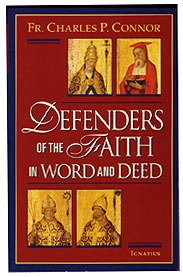 On
On October 31, 1517, an Augustinian monk named Martin Luther, long fearful
for his own salvation, seemed to unleash tremendous personal hostility
when he nailed his famous Ninety-five Theses to the door of the cathedral
in Wittenburg, Germany. This single action has traditionally been viewed
as the beginning of the Protestant Reformation. Before it ended, several
new theologies were formulated by at least two generations of reformers,
causing Christianity to fall into centuries of division.
The term sola fide ("faith alone") is often associated with Luther.
It was a belief that provided him a great deal of inner tranquility. Once,
while meditating on Saint Paul's Letter to the Romans, Luther came to
the verse that states that "man is justified by faith apart from works
of the law." [1] Luther took this to mean that a person does not have
the capability to work out his own salvation because of his sinful human
nature. Instead, God gives his free gift of grace, which stimulates faith
and leads to salvation. Luther rejected, it appears, the admonition of
the Apostle James that faith without good works is dead, [2] preferring
to concentrate only on that which gave him inner peace.
Luther also opposed the buying and selling of indulgences, a practice
quite rampant in the western Europe of his day. The Church has always
taught that an indulgence is a remission of the temporal punishment due
to sin, and Luther correctly pointed out that such forgiveness cannot
be purchased. The abuse of selling indulgences and the erroneous attitudes
it created are well illustrated by the slogan of a preacher in Luther's
time: "Another soul to heaven springs when in the box a shilling rings."
[3]
While justification and indulgences are the issues for which Luther is best
remembered, many more grievances comprised his Wittenburg list. Some two
years after he had posted them, he confided in writing to a friend that
the idea of the Pope as the anti-Christ, once repellent to him, now seemed
to have more plausibility. Luther at first had no intention of beginning
a new ecclesial body. As he meditated on Scripture, however, he began to
think that the Church should return to the gospel in its purest form as
he envisioned it, eliminating what he regarded as unnecessary liturgical
ceremony, hierarchical structure, and the like:
For Luther everything began from his fundamental experience ...
salvation comes [to human beings] from God through faith alone. God
does everything and they do nothing. Good works do not make people good,
but once people have been justified by God they do good works.... So
Luther turned his back on everything in tradition which denied the preeminence
of scripture and faith. He rejected what appeared to him as a means,
a claim on the human side to deserve salvation: the cult of the saints,
indulgences, religious vows, those sacraments which [he could not find]
attested in the New Testament. Anything not explicitly set out in scripture
was worthless. All that counted was the universal priesthood of the
faithful. [4]
In 1520, the papal bull Exsurge formally condemned forty-one of Luther's
propositions, and he was given two months to submit to the authority of
the Church. In December 1520, he publicly burned his copy of Exsurge,
and excommunication followed one month later.
Closely akin to Luther was Ulrich Zwingli in Switzerland. A former priest
and student of the Renaissance scholar Erasmus, Zwingli was based in the
city of Zurich, having moved from Glavis, the scene of his former priestly
labors. He was, from all accounts, a more inwardly secure man than Luther.
His preoccupation was not so much his own eternal destiny as it was freeing
his disciples from the shackles of Rome's domination. Following this view
and a Lutheran disposition toward "gospel purity", reformed churches were
established in Switzerland. These congregations established vernacular liturgies,
in contrast to the Latin liturgy of the Catholic Church. They also removed
statues of the saints, secularized convents, and followed other practices
emerging in neighboring Germany.
The French layman John Calvin brought a nonclerical background to Reformation
theology and represented a younger generation of reformers. Calvin was also
based in Switzerland, though in the city of Geneva. In fact, his grave can
be seen there to this day. It consists of a single pole, atop of which are
the initials "J. C." This protrudes through some greenery and is surrounded
by a small iron fence. The grave is reminiscent of the stark nature of ecclesial
architecture in Calvinistic churches, if not the severity of Calvin's thought.
Calvin was obsessed with the sovereign nature of God. In his Institutes
of the Christian Religion, he develops the theory for which he is best
remembered: predestination. All creatures merited damnation, but God in
his mercy chose some for salvation. These, in turn, needed the vehicle of
a church in which to express their faith. Calvin's emphasis was very much
on the church as a local community of believers in whom power rested. His
unique brand of theology was gradually adopted by religious groups identified
as Presbyterians, Huguenots, Puritans, and Congregationalists. His ideas
spread quickly to England and to its colonies in North America. Also, they
found their way to Scotland in the person of John Knox, as well as the Low
Countries of Europe, Holland in particular.
In England, despite the fact that Henry VIII was given the title Defender
of the Faith by the Holy See for a book published under his name, the monarch
was anything but a theologian, and the Reformation in England was not theological
in origin. Henry's wife Catherine of Aragon gave him no male heirs. Wishing
to have his marriage annulled, but refused by the Church, he turned to the
English clergy with the same request and subsequently declared himself head
of the church in England. Henry's Six Articles, promulgated in 1539, kept
the essentials of the Catholic faith (even though failure to take the Act
of Supremacy recognizing Henry's headship of the church led most often to
execution). it was not until his death that Calvinistic theology began to
find its way into the Book of Common Prayer. When Henry's daughter Mary
Tudor became monarch in 1553, she briefly restored Catholicism and carried
out over two hundred executions of Protestant heretics. Upon the accession
of her half-sister Elizabeth (the daughter of Henry VIII and Anne Boleyn),
Anglicanism was officially established as the state religion and the Thirty-nine
Articles spelled out the particulars of belief. They did not rid the Church
of England of as many vestiges of Romanism as some would have liked. It
seemed to be
a theology very close to neighbouring Calvinism which maintained
traditional forms like the episcopate and liturgical vestments. Both
Catholic and Protestant dissidents were mercilessly persecuted. [5]
The Reformation was, to be sure, no isolated event,
but a series of movements in several European countries that in varying
ways departed from Catholicism. In response to Protestantism and to the
problems it sought to address, the Catholic renewal or Counter-Reformation
became a reality. One of the magnificent fruits of that renewal was the
establishment of the Society of Jesus, founded by the Spanish Basque lgnatius
of Loyola.
Loyola is a castle at Azpeltia, located in the Pyrenees Mountains. It
was there that Iñigo, as he was then called, was born, in 1491.
His background was military, and he fought briefly against the French
in Pamplona. A serious battle injury brought him back to his native castle
and confined him for weeks. He was a worldly sort and would love to have
occupied his hours reading romantic novels. Instead, only two books, on
the lives of the saints and the life of Christ, were available. The biographies
of the saints began to fascinate him, make him think of the uselessness
of his own life up to that point, and provoked the interior question:
If such acts of spiritual heroism were possible in the lives of others,
why would they not be possible in his?






A hunger for God began to overtake him by degrees, and after a time he
resolved to go on pilgrimage to the shrine of Our Lady of Montserrat.
Sometime during the course of that visit he determined that thenceforth
he would lead a penitential life and his stay in the nearby small town
of Manresal where he experienced solitude and prayer, confirmed his desire
all the more. He made a pilgrimage to the Holy Land and then studied in
Barcelona, Alcala, and, finally, at the University of Paris, where he
received the Master of Arts in 1534. Still his fervor did not slacken.
At Paris he was to meet companions who were like-minded in spiritual outlook
and whose names would become well known in Jesuit annals: Francis Xavier
(a Spanish Basque like Ignatius), Favre, Laynez, Salmeron, Rodriguez,
Bobadilla. Together they would become "the Company", the first Jesuits,
defenders of the faith in heretical times.
On the feast of Our Lady's Assumption, August 15, 1534, these men professed
their vows in the chapel of Saint Denis on the hill of Montmartre in Paris.
They vowed to work for the glory of God. They agreed that when they finished
their studies and became priests, they would go to Jerusalem together,
but if they could not go there in a year, they would go to Rome and offer
to go anywhere the Pope deemed necessary. Their hopes of going to Palestine
would not be realized, but other needs quickly became apparent.
There being no likelihood of their being able soon to go to the
Holy Land, it was at length resolved that Ignatius, Favre, and Laynez
should go to Rome and offer the services of all to the pope, and they
agreed that if anyone asked what their association was they might answer
"the Company of Jesus", because they were united to fight against falsehood
and vice under the standard of Christ. On his road to Rome, praying
at a little chapel at La Storta, Ignatius saw our Lord, shining with
an unspeakable light, but loaded with a heavy cross, and he heard the
words, Ego vobis Romae propitius ero, "I win be favorable to
you at Rome." [6]
Eventually they became a religious order and took formal vows. The members
of the Society of Jesus, or Jesuits, truly were men of the Church. The papal
bull of institution, promulgated in 1540 during the pontificate of Pope
Paul III, stated the Society's purposes. The document "Rules for Thinking
with the Church" is also illustrative. It was composed by Ignatius himself
as an addition to his Spiritual Exercises. It represents a reply
to the Protestant challenge, affirming many long-established practices that
were under severe criticism and attack. It is a document "characterized
more perhaps by its balance and moderation than one may at first think".
[7] Rule Thirteen initially appears anything but moderate:
If we wish to proceed securely in all things, we must hold fast
to the following principle: What seems to me white, I will believe black
if the hierarchical Church so defines. For I must be convinced that
in Christ Our Lord, the bridegroom, and in His spouse the Church, only
one Spirit holds sway, which governs and rules for the salvation of
souls. For it is by the same Spirit and Lord who gave the Ten Commandments
that our Holy Mother Church is ruled and governed. [8]
In addition to absolute loyalty, Ignatius in the Constitutions leaves no
doubt that it is to be interpreted as willingness to carry out the wishes
of the Holy See:
All that His Holiness will command us for the good of souls, or
the propagation of the faith, we are bound to carry out with neither
procrastination nor excuse, at once and to the fullest extent of our
power, whether he sends us among the Turks, to the New Worlds, to the
Lutherans, or any other manner of believers or unbelievers.... This
vow may scatter 'us to the distant parts of the world. [9]
The work of the Jesuits in defending the faith must be looked at in the
context of the Counter-Reformation. The times called for a spirited defense
of faith; it was the time for Catholic renewal; the Church had been weakened
from within by the laxity of her own; she had been weakened from without
by the strong theological dissent of the various reformers. The Church had
to respond adequately, and the Jesuits found themselves part of this response.
In all manner of response, however, Ignatius was quite insistent that charity
prevail and that the integrity of the Church not suffer because of the misdeeds
or poorly contrived statements of those attempting to defend it:
Great care must be taken to show forth orthodox truth in such a
way that if any heretics happen to be present they may have an example
of charity and Christian moderation. No hard words should be used nor
any sort of contempt for their errors be shown. [10]
A man can be charitable as he clearly, unambiguously teaches Catholic truth.
This was Ignatius' aim, and education was to play a key role. If men were
adequately trained, the Church would be better served; such motivated the
opening of the Roman and German colleges in the Eternal City. The former
was established primarily though the largesse of the family of Saint Francis
Borgia, the man who would become Ignatius' successor as third General of
the Society; the latter was an educational bastion for students from all
countries affected by the Reformation.
Although an educated Jesuit was always to exercise charity, his response
to heresy must be firm and decisive. One of the truly great Jesuits to receive
instruction from Ignatius before undertaking his mission was Saint Peter
Canisius:
Once a man has been convicted of heretical impiety or is strongly
suspect of it, he has no right to any honour or riches: on the contrary,
these must be stripped from him ... If public professors or administrators
at the University of Vienna or the other universities have a bad reputation
in relation to the Catholic faith, they must be deprived of their degrees.
All heretical books must be burned, or sent beyond all the provinces
of the kingdom. [11]
Canisius' record of educational beginnings is impressive: Ingolstadt, Vienna,
Prague, Strasbourg in Alsace (where he was involved in the opening negotiations),
Innsbruck (where he introduced the Sodality of the Blessed Virgin Mary to
collegians), Dillingen, and Fribourg. In addition, he managed time at the
Council of Trent, where his very practical advice to the Council Fathers
about the Reformation in Germany was highly regarded. Strong as his defense
of Catholicism was in day-to-day relations with German Protestants, he favored
the approach of peaceful coexistence. Some saw this as betrayal, but Canisius
felt (and later convinced Rome) that a calm, firm, and educated approach
would help Catholics win an intellectual battle they had previously been
losing. All of this is not to suggest that his career was solely academically
oriented. His sojourn in Vienna proves the contrary:
Many parishes were without clergy, and the Jesuits had to supply
the lack as well as to teach in their newly-founded college. Not a single
priest had been ordained for twenty years; monasteries lay desolate;
members of the religious orders were jeered at in the streets; nine-tenths
of the inhabitants had abandoned the faith, while the few who still
regarded themselves as Catholics had, for the most part, ceased to practice
their religion. At first Peter Canisius preached to almost empty churches,
partly because of the general disaffection and partly because his Rhineland
German grated on the ears of the Viennese; but he found his way to the
heart of the people by his indefatigable ministrations to the sick and
dying during an outbreak of the plague. The energy and enterprise of
the man was astounding; he was concerned about everything and everybody,
from lecturing in the university to visiting the neglected criminals
in the jails. [12]
Such accomplishments could, no doubt, have been recounted in any of the
cities where Canisius spent any length of time. Christopher Hollis, in his
study of the Jesuits, sums up the work of this saint, now venerated as a
Doctor of the Church:
The general effect of Canisius' work was immense. He turned the
course of history. In each of the great colleges he built there were
up to a thousand students. He was the first Jesuit to enter Poland.
By 1600, there were 466 Jesuits there. When he entered Germany in 1550,
he entered with 2 Jesuits as his companions. When he left it over 30
years later there were 1,111 Jesuits at work in the country. [13]
Germany was, of course, not the only scene of the Reformation. Jesuits labored
in many countries on the Continent, and also in England. Even before the
English mission was a reality, Ignatius ordered prayers for the conversion
of England and for the English and Welsh martyrs of penal times, twenty-six
of whom had been Jesuits. Centuries later Henry Edward Manning, Cardinal
Archbishop of Westminster, himself a convert to Catholicism (and from his
tone no particular friend of the Reformation), wrote about the work of the
English Jesuits:
It was exactly what was wanted at the time to counteract the revolt
of the sixteenth century. The revolt was disobedience and disorder in
the most aggressive form. The Society was obedience and order in the
most solid compactness.... They also won back souls by their preaching
and spiritual guidance. They preached 'Jesus Christ and Him crucified'.
This had been their central message, and by it they have deserved and
won the confidence and obedience of Souls. [14]
Jesuit missionary activity was strongly influenced by two sources: Ignatius'
Spiritual Exercises and the Imitation of Christ by Thomas
a Kempis. The Society's founder tried to induce in the life of each Jesuit
a peaceful state of mind without inordinate attachments. Such inner tranquility
would help one in moments of crisis and in the major decisions of life.
With a peaceful mind, each of life's situations could be assessed in the
light of God's glory and the salvation of one's immortal soul. The Imitation
spoke to the heart of the disciple and always tried to elicit a generous
response. It is in this context that all Jesuit renewal should be judged.
British historian Thomas Macaulay, writing in grand style, captures these
grand men:
The order possessed itself once of all the strongholds which command
the public mind, of the pulpit, of the press, of the confessional, of
the academies. Wherever the Jesuit preached, the church was too small
for the audience. The name of a Jesuit on a title-page secured the circulation
of a book. It was in the ears of a Jesuit that the powerful, the noble,
the beautiful, breathed the secret history of their lives. It was at
the feet of the Jesuit that the youth of the higher and middle class
were brought up from childhood to manhood. [15]
It was to be the lot of Ignatius to spend most of his Jesuit life in Rome,
so vast an undertaking was it to direct the Society's business. He saw the
Society of Jesus grow from the original company to one thousand members
in nine countries and provinces in Europe, India, and Brazil. His death
came suddenly on July 31, 1556, in Rome. One may still see the room, along
with the adjoining quarters, where he wrote his Society's Constitutions.
His tomb is venerated in the magnificent church of the Gesù on Rome's
famous Corso Vittorio Emmanuele. His was a life lived for Christ and in
defense of his Church, or as one commentator has put it, "To gain others
to Christ he made himself all things to all men, going in at their
door and coming out at his own." [16]
Endnotes:
[1] Rom 3:28.
[2] James 2:17.
[3] Jean Comby with Diarmaid MacCulloch, How to Read Church History
(New York: Crossroad, 1991), 2:11.
[4] Ibid., 13.
[5] Ibid., 21.
[6] Herbert Thurston, S.J., and Donald Attwater, eds., Butler's Lives
of the Saints (Westminster, Md.: Christian Classics, 1988), 3:224.
[7] John C. Olin, The Catholic Reformation: Savonarola to Ignatius Loyola
(New York: Harper and Row, 1969), 202.
[8] The Spiritual Exercises of St. Ignatius, trans. Louis J. Puhl,
S.J. (Chicago: Loyola University Press, 1951), 160.
[9] Jean Lacouture, Jesuits: A Multibiography (Washington, D.C.:
Counterpoint, 1995), 76.
[10] Thurston and Attwater, Butler's Lives of the Saints, 3:225-26.
[11] Ignatius of Loyola to Peter Canisius, August 13, 1554, cited in Comby
and MacCulloch, How to Read Church History, 2:30.
[12] Thurston and Attwater, Butler's Lives of the Saints, 2:168-69.
[13] Christopher Hollis, The Jesuits: A History (New York: Macmillan
Com-
pany, 1968), 25.
[14] Thurston and Attwater, Butler's Lives of the Saints, 3:225.
[15] Thomas Macaulay, Essay on Von Rank's History of the Papacy,
cited in Hollis, Jesuits, 27.
[16] Thurston and Attwater, Butler's Lives of the Saints, 3:227.
Related IgnatiusInsight.com/Insight Scoop Links:
• Ignatius of Loyola and Ideas of Catholic Reform |
Vince Ryan
• When Jesuit Were Giants | Interview with Father Cornelius Michael Buckley, S.J.
• The Jesuits and the Iroquois | Cornelius Michael Buckley, S.J.
• The Tale of Trent: A Council and and Its Legacy
| Martha Rasmussen
• Reformation 101: Who's Who in the Protestant Reformation |
Geoffrey Saint-Clair
• Why Catholicism Makes Protestantism Tick | Mark Brumley
Related Ignatius Press Books:
•
St. Ignatius of Loyola | James Brodrick, S.J.
•
The Jesuit Missionaries to North America | Father François Roustang
•
The Re-formed Jesuits, Vol 2 | Joseph Becker, S.J.
•
St. Ignatius and the Company of Jesus (Vision Series) | August Derleth
•
The Word, Church and Sacrament in Protestantism and Catholicism | Fr. Louis Bouyer
Father Charles Connor is the historian of the Diocese of Scranton and
pastor at St. John the Evangelist Church, Susquehanna. He is the host of
several
programs on EWTN and author of Classic
Catholic Converts .
July 30, 2013
World Youth Day, Liturgy, and the New Evangelization
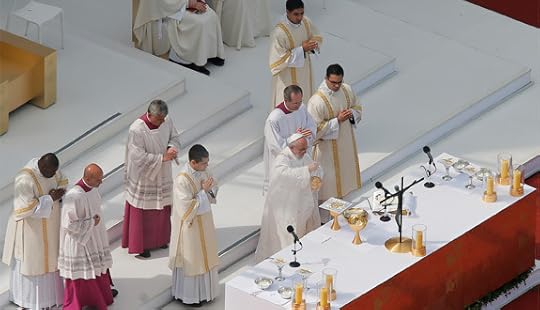
World Youth Day, Liturgy, and the
New Evangelization |
Dr. Leroy Huizenga | CWR
Well-formed disciples are shaped and
taught through good liturgy:
lex orandi, lex credendi, lex
vivendi
By the measures of attendance and
enthusiasm, World Youth Day in Rio de Janiero, Brazil, was a smashing
success, as organizers report well over three million energetic youth
on Copacabana Beach for the Saturday vigil and Sunday’s closing
Mass. World Youth Day was conceived by John Paul II as part of his
strategy for a “new evangelization,” a term he first used in 1983
in an address to Latin American bishops. As he later described in
Redemptoris Missio, a “new evangelization” or a
“re-evangelization” was needed “particularly in countries with
ancient Christian roots, and occasionally in the younger Churches as
well, where entire groups of the baptized have lost a living sense of
the faith, or even no longer consider themselves members of the
Church, and live a life far removed from Christ and his Gospel.”
From the first official World Youth Day
in Rome in 1986, then, the events have taken place not in far-flung
virgin mission fields where Christian faith has been unknown but in
cities in countries of longstanding Christian tradition where the
faith has been forgotten, among them Buenos Aires, Argentina (1987);
Czestochowa, Poland (1991); Denver, USA (1993); Manila, Philippines
(1995); Paris, France (1997); Rome (2000); Cologne, Germany (2005);
and Madrid, Spain (2011). And World Youth Days have born fruit for
the New Evangelization. Taken out of the narrow confines of Catholic
life in their particular parishes and communities and given a grander
vision of the Church universal, many younger priests, seminarians,
and religious trace their vocational discernment to their attendance
at a World Youth Day, while many younger laypeople claim to have
discovered a deeper, or even initial, conversion to the Lord and His
Church.
Mountaintop experiences do matter: they
shake youth (and adults) out of the boredom of quotidian routine. But
mountaintop experiences are not the norm, as Scripture attests; the
theophany on Mount Sinai was not enough to sustain the people for the
long term, and even after witnessing Jesus’ Transfiguration on
Mount Tabor, Peter, James, and John failed again and again.
Mountaintop experiences are not enough to sustain a person, a parish,
a Church. Indeed, one sees in the Gospels that even repeated
encounter with Jesus Christ, God incarnate, was not always enough to
sustain the disciples. But from a passage late in the Gospel of Luke,
which Pope Francis presented as part of his program for the New
Evangelization, we learn that moving from despair to courage for
mission involves an encounter with the risen Christ in the Eucharist.
The Backbone of the New
Evangelization
If encountering Christ in the Eucharist
empowers mission, liturgy matters, for the Eucharist is celebrated
and generally received in the Mass, now often called the eucharistic
liturgy. In his prepared remarks as well as his off-the-cuff
comments, Pope Francis did not mention liturgy as such. But liturgy
formed the necessary subtext of many of Francis’ remarks, given his
emphasis on the importance of mystery, the imperative of formation,
and the graces of the sacraments, especially the Eucharist. Liturgy
thus necessarily forms the backbone of the new evangelization.
July 29, 2013
The Key Themes of World Youth Day 2013
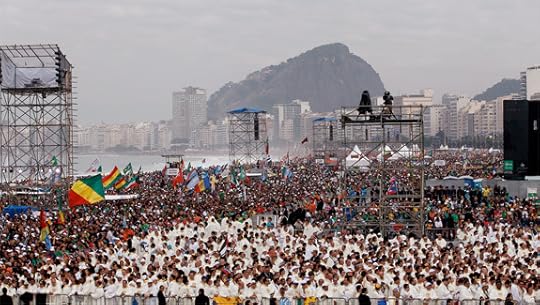
The Key Themes of World Youth Day 2013 |
William
L. Patenaude | CWR
The
words and actions of Pope Francis in Brazil built directly on the
evangelizing work of his predecessors
Two
valuable lessons came out of World Youth Day 2013. The first is that
the Holy Spirit is intent on igniting with joy and resilience the
post-conciliar Church of the twenty-first century. The second is
that, in large part due to the catechetical influences of Bl. John
Paul II and Benedict XVI, Pope Francis’s flock can better balance
the joys of the Spirit with the Cross of Christ.
It
will be helpful, then, to ponder some themes from Rio’s World Youth
Day because it is highly likely we’ll be encountering them
repeatedly as an energized Pope Francis shepherds his flock deeper
into the twenty-first century.
Go
and Make Disciples
“Where
does Jesus send us? There are no borders, no limits: he sends us to
everyone. The Gospel is for everyone, not just for some. It is not
only for those who seem closer to us, more receptive, more welcoming.
It is for everyone. Do not be afraid to go and to bring Christ into
every area of life, to the fringes of society, even to those who seem
farthest away, most indifferent. The Lord seeks all, he wants
everyone to feel the warmth of his mercy and his love.” — Pope
Francis’s closing homily,
World Youth Day, 2013.
Popes,
bishops, and even laity have said and written much during these past
few years on the New Evangelization. When planning for World Youth
Day 2013 began during the pontificate of Pope Benedict XVI the time
had come to urge the Church to act. Thus the theme “Go and make
disciples” seemed fitting for an event that draws millions of young
people and many millions more (of every age) through social media.
But
then Benedict XVI’s doctors told him that he could no longer travel
by air. And it seemed likely that even if he could he might not have
the strength that World Youth Day schedules demand. (One wonders how
much his being unable to travel to Rio de Janeiro influenced his
decision to cede the Chair of St. Peter.)
The
question of whether the pope would attend World Youth Day vanished
with the papal transition. Pope Francis brought to the world stage a
bold and gregarious personality. He changed the rules of papal
engagement and accelerated the use of social media. He continues to
bring his own style to the papacy, one that resonates in a world of
political uncertainty, economic struggle, and a growing weariness
with impersonal spirituality.
With
a stronger, younger body than his predecessor’s, Pope Francis began
charging into crowds—which, come to think of it, seems natural to
do for those who espouse an incarnational faith. Once inside the
crowds, whether in Rome or Rio or wherever, he is especially happy
when he meets those on the outskirts.
We
see the fruits of this charging
in and greeting the outskirts by
listening to those who are not at all enamored with Catholicism but
are attracted to Pope Francis.
Ars Memoria
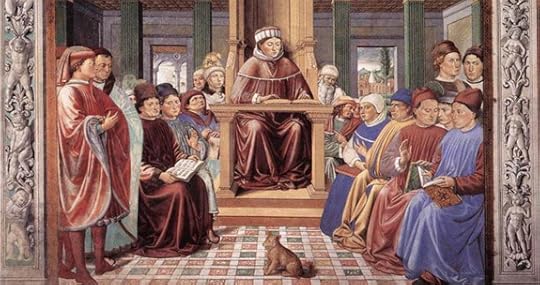
Ars Memoria | John B. Buescher | CWR
Why would anyone think that
memorization is not a valuable part of learning?
In the 1960s, contrary to the inherited
wisdom of mankind, educators in general and Catholic educators, too,
decided that having students memorize things was a terrible notion.
If I recall, the thinking was that memorizing was a purely mechanical
operation, that it did not penetrate to the deep truth, and that it
turned out mindless robots who would uncharitably spew their mind
chaff out at opponents to distract them and protect them from being
caught by the truth.
Or something like that.
The fear of being “hypocritical”
was at work here—that great Calvinist weight that hung like an
albatross around the necks of the puritans and which they transferred
to their Progressive descendents who still demarcate the Elect and
the Damned based on worldly signs. Their acute awareness of the
difference between the outer man and the inner man made some of them
greatly aware of how debased is our state in this world, but also
made some of them greatly concerned with the evidentiary signs of
blessedness.
Some of them strove to align the inner
man with the outer one, even though they were convinced that not they
but God was the only one capable of that. Their modern Progressive
descendents gave up on that project as ultimately hopeless and
decided that the only way to achieve the alignment of the inner and
outer—to become “authentic”—was to erase the difference:
which meant accepting one’s unfashioned self not only as one’s
“natural” condition, but as one’s highest ideal. Indeed, it
sometimes seems that for Progressives “hypocrisy” is not only the
greatest sin, but perhaps the only one. It certainly seems sometimes
like the only one they are interested in convicting others of.
That affected the modern view of
pedagogy (as it did liturgical ad libbers, seeking “authenticity”).
Even losers began to receive awards because they were “great” in
and of themselves. It was reminiscent of the way in which declaring
oneself already “saved” somehow was warped to mean that no one
had to make any effort at holiness as a result.
Before, the problem was finding the
best way to bring an unformed being into alignment with the highest
wisdom offered by culture. But after Jean-Jacques Rousseau’s
ludicrously unrealistic picture of pedagogy in Émile, this
was reversed: the “highest wisdom” of the culture was judged as
a sham and a debasement that created and protected hypocrites, and
the pedagogical mission came to be seen as the destruction of that
culture in the child, so that the authentic inner man—the noble
savage—could flourish.
“Rote memorization” was a
foundational pillar of the older pedagogy, so it had to go, along
with all other methods of instilling into the child the conventional
formulations of wisdom.
July 27, 2013
The Godless Confusion and the God of Justice
Readings:
• Gn 18:20-32
• Ps 138:1-2, 2-3, 6-7, 7-8
• Col 2:12-14
• Lk 11:1-13
According
to atheist Richard Dawkins in his best-selling book The
God Delusion, the God
of the Old Testament is “arguably the most unpleasant character in
all fiction: jealous and proud of it; a petty, unjust, unforgiving
control-freak; a vindictive, bloodthirsty ethnic cleanser; a
misogynistic, homophobic, racist, infanticidal, genocidal, filicidal,
pestilential, megalomaniacal, sadomasochistic, capriciously
malevolent bully.”
That remark indicates far more familiarity with
the dictionary than with the Bible. I wonder, how much fiction has
Dawkins read? More seriously, how carefully has he actually read the
Bible?
Sadly,
Dawkins merely appeals to the tired notion that the “God of the Old
Testament” is a cruel tyrant with little love for His creation. I
suspect that even many Christians have the vague sense that such is
the case. And today’s reading from the Old Testament is the sort of
passage that can, rather easily, be misinterpreted to provide
evidence for that view.
In fact, some commentators have understood
the conversation between the Lord and Abraham about Sodom and
Gomorrah as a case of the cool-headed patriarch talking the
hot-headed deity out of rash, murderous judgment—or, as Dawkins
might put it, “an act of vindictive genocide.” But as difficult
as the text is, it actually presents something quite different: a
calm and deliberate conversation between the “Judge of all the
world”, responding to the outcry of those anguished by the deviance
practiced in those infamous cities, and the bold servant of God,
whose questions seem as much theological as personal in nature.
Far
from being petty and unjust, God was responding with patience and
love to two different but related sets of questions. The first, as
noted, came from those inhabitants of Sodom and Gomorrah crying out
for justice, apparently due to a combination of sexual immorality and
social inequality (Gen 19:4-11; Ez 16:46-51). God did not intend to
simply destroy the cities and all
of their inhabitants. Rather, as in the days of Noah, He desired to
put an end to lawlessness, yet with the knowledge that a few just men
could be found among the wicked. And so Genesis 19 depicts two angels
sent to rescue Lot and his family from the coming destruction—and
that after saving them from the advances of a lustful mob.
The
second set of questions, from Abraham, was concerned with whether or
not the Judge of all things would indeed be just. That remarkable
conversation reveals an intimacy between man and God that is unique
among ancient religious literature. “After that, once God had
confided his plan [Gen 18:17-21]” the Catechism
of the Catholic Church
notes, “Abraham's heart is attuned to his Lord's compassion for men
and he dares to intercede for them with bold confidence” (CCC
2571). Through both divine revelation and his natural intelligence,
Abraham learned what it meant to be just and compassionate. Satisfied
that God would act justly, Abraham did not stay to witness the
salvation of his relatives, but returned home (Gen 19:33).
The
intimacy between the Creator and the recipient of the Abrahamic
covenant (cf., Gen 12, 15-17; CCC 72) foreshadowed the unique
revelation about the Father given by the Son, who not only prayed to
the Father but also taught His disciples how to pray to the Father.
Luke’s account of the “Our Father,” in today’s Gospel, is
shorter than that in given by Matthew, which is the version commonly
known and said. It first acknowledges God as Father, as well as the
holiness of His name, along with the desire to see His kingdom
realized in fullness. It then asks for three basic needs, without
which man will perish, both physically and spiritually: nourishment
(“our daily bread”), forgiveness, and salvation—“do not
subject us to the final test.”
Their
heavenly Father, Jesus told the disciples, gives good gifts to those
who ask and seek with the humble, trusting heart of a child. It is a
humility and trust based in prayer and conversation with God, who is
not an unpleasant fictional character, but a caring and merciful
Father.
(This "Opening the Word" column originally appeared in the July
29, 2007, edition of Our Sunday Visitor newspaper.)
From Calvinist Prosecutor to Papist Apologist
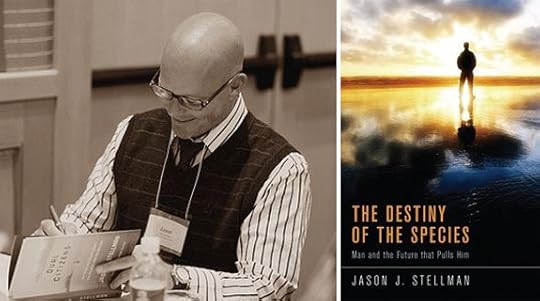
From Calvinist Prosecutor to Papist Apologist
| David
Deavel | Catholic World Report
Convert
Jason Stellman's new old-fashioned apologetic explains that we are
“hard-wired for heaven”
Sunday,
June 21, marked the 90th anniversary of the Scopes Monkey
Trial decision. The questions surrounding evolution—meaning, in
particular, the origins of humans—still raise large and important
questions for how we understand human nature and the doctrine of
original sin. But Jason Stellman thinks that the obsession with our
physical origins, though understandable, is perhaps theologically
off-kilter. Where we've come from biologically is not as important
as where we're heading. It's not the beginning of the journey,
man—it's the destination. Stellman's The
Destiny of the Species (Wipf
and Stock, 2013) is a brief,
rollicking, and readable apologetic, notable not just for turning the
question of origins on its head, but also for pioneering a slightly
different route from the path taken by many Catholic converts in
their first books.
From Prosecutor to Papist
Stellman's
own personal story is compelling. Born and raised in Orange County,
California, Stellman came to serious faith in the context of the
Evangelicalism of the California preacher Chuck Smith's Calvary
Chapel ministries. He served as a Protestant missionary in both
Hungary and Uganda before turning to a more theologically rigorous
form of Protestantism: Calvinism. Stellman attended Westminster
Seminary in Escondido, California and began ministering in the
Presbyterian Church in America, the largest conservative Presbyterian
denomination in the U.S., planting Exile Presbyterian Church in
Woodinville, WA in 2004. Stellman's name came into the limelight
when he was chosen to serve as the chief prosecutor in the 2011
heresy trial of fellow Presbyterian minister Peter Leithart, a
Calvinist writer and scholar known to readers of journals including
First Things and
Touchstone. Leithart's
views were accused of being in line with a school of Presbyterian
thought known as the “Federal Vision,” and he was tried for,
among other charges, allegedly failing to distinguish justification
and sanctification, divine law and divine grace, and teaching that
baptism confers grace and divine adoption. In short, Leithart was on
trial for being too Catholic.
Although
Stellman's work as prosecutor was acknowledged as solid at the time,
Leithart was acquitted by the Northwest Presbytery. In the time
after this trial, however, Stellman himself began to question certain
historic Protestant beliefs like sola scriptura and
sola fide.
July 26, 2013
Celebrating World Youth Day with Ignatius Press
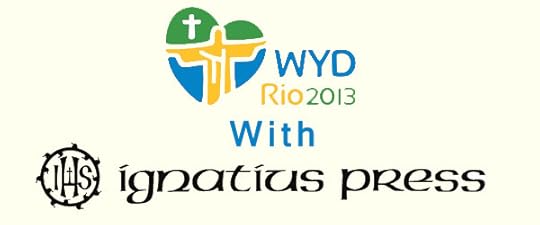
First World Youth Day with Our New Pope
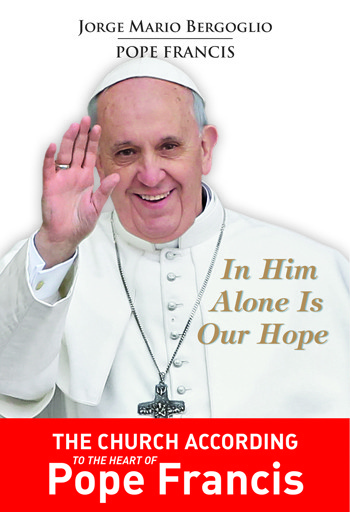
"As you know, the principal reason for my visit to Brazil goes beyond its borders. I have actually come for World Youth Day. I am here to meet young people coming from all over the world, drawn to the open arms of Christ the Redeemer. They want to find a refuge in his embrace, close to his heart, to listen again to his clear and powerful appeal: 'Go and make disciples of all nations.'"
—Pope Francis, Arrival Address, World Youth Day 2013
Learn more about the man who reminds us of our call to go out and evangelize to all nations in one of our many Pope Francis titles:
In Him Alone Is Our Hope
The Light of Faith
Francis, Pope of a New World
Pope Francis: His Life in His Own Words
On Heaven and Earth: Pope Francis on Faith, Family, and the Church in the Twenty-First Century
Save 20% on these titles and other Pope Francis products!
Shop Now!
YOUCAT's Second Anniversary!
"Study this catechism! This is my heartfelt desire. Study this catechismus with passion and perseverance. You need to be more deeply rooted in the faith than the generation of your parents".
-Pope Benedict XVI on YOUCAT
Let our new YOUCAT: Study Guide help you fulfill Pope Benedict's desire. Aimed at helping readers to get the most out of YOUCAT, the companion study guide features 35 topics based on the catechism.
Other great titles that will deepen and enrich the faith of the young people in your life are:
YOUCAT: Youth Prayer Book
Your Questions, God's Answers
The Loser Letters
We're on a Mission from God
Save 20% on these titles and more when you shop today!
Shop Now!
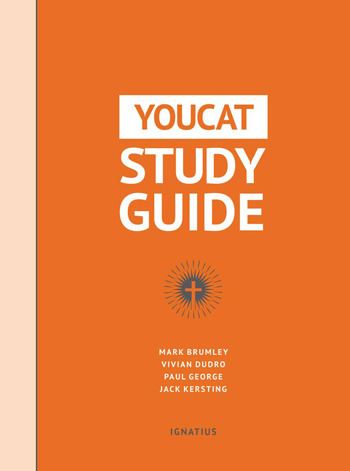
St. Paul Pilgrimage Mediterranean Cruise
with Steve Ray and Ignatius Press
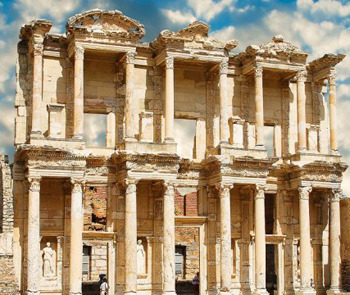
If Israel is where the Church was born--Turkey, Greece and Rome is where it grew up. Sail and tour the Second Holy Land with us as your escorts and guides You will not find a Saint Paul Cruise like this anywhere else. Every port is a Biblical, Catholic and St. Paul site. Don't miss the opportunity to see amazing sites while enriching your faith and nourishing your spirit.
Don't miss out, reserve your place today!
Learn More!
The Ear of the Heart Book Tour, Northern California
Come hear and meet Mother Dolores Hart in Northern California July 27-Aug. 2! Ignatius Press invites you to hear a Mother speak about the inspiring story of her glamorous life as a movie star to becoming a Benedictine contemplative nun at Regina Laudis Abbey. And, purchase an autographed copy of her best-selling new autobiography, The Ear of the Heart !
Learn More!
Free Catholic Study Bible App
Lighthouse Catholic Media and Ignatius Press have teamed up to offer the FREE Catholic Study Bible App! … now better than ever before! Packed with more content and features, this app offers the entire Catholic Bible and is available on iPhone, iPad and iPod Touch devices — and with the Android and Kindle versions coming soon! Just go to the iTunes app store and search "lighthouse bible app" and download today!
Learn More!
Last Call for This Year's Napa Institute
Catholic leaders: don't miss this year's Napa Institute, August 1-4. Join Archbishops Gomez, Chaput, Aquila, Nienstedt, Cordileone; Bishops Morlino, Vasa, Vann and Gudziak, along with Fr. Robert Spitzer, S.J., Fr. Brian Mullady, OP, Fr. Ronald Tacelli, S.J., Dr. Tim Gray, John Garvey, Mother Dolores Hart, O.S.B., Dr. Carolyn Woo, Kathryn Jean Lopez and Dr. Francis J. Beckwith. Hosted by the world-famous Meritage Resort, in the beautiful Napa Valley of California, this year's Napa Institute will explore such topics as the sanctity of work, building a Catholic culture, and reason & faith. For more information go to www.napa-institute.org or click below.
Learn More!
Catholic World Report
The Arab Springtime is a Nightmare for Syrian Christians
By Alessandra Nucci
Middle Eastern Christians decry how Western media misrepresent the increasingly violent events in Syria.
Now that Syria is in shambles—with an estimated 93,000 dead, 1.5 million refugees, and 4.5 million internally displaced; ancient churches torched, destroyed, or vandalized; Christians targeted for murder and kidnapping and even used as human shields—now the mainstream media is starting to admit that, yes, the rebel forces appear to include quite a few Islamist guerrillas...
Continue reading here
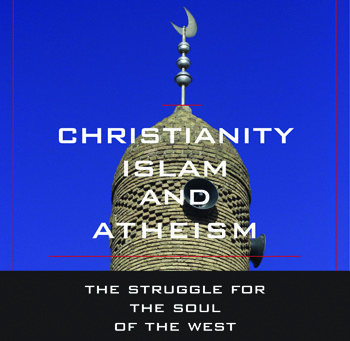
Homiletic & Pastoral Review
The Science of Divine Love
By Brent Withers
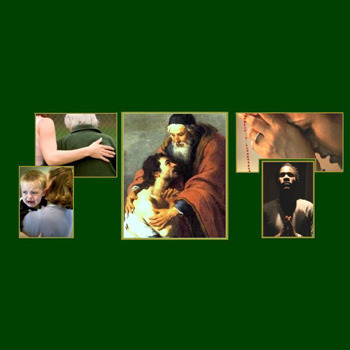
The science of divine love is measured along a dimension of intensity and depth, rather than the worldly one of quantity. With this equation, the means for our sanctification is established. All our actions, prayers, and sufferings build up the mystical body of Christ.
The human dimension works along quantity, finite pleasures, and immediate reward. The eternal dimension is one of quality, eternal treasures, and delayed reward. Quality is always superior to quantity. The growth of divine love or charity is through its intensity where we come to love God more perfectly and purely for himself....
Continue reading here
Copyright © 2013 Ignatius Press All rights reserved.
You are receiving this email because you opted in at our website www.ignatius.com
Ignatius Press
1348 10th Avenue
San Francisco, CA 94122

Forward to a Friend

Follow on Twitter

Friend on Facebook
Unsubscribe
Update Subscription Preferences
What is Social Justice? From John Paul II to Benedict XVI
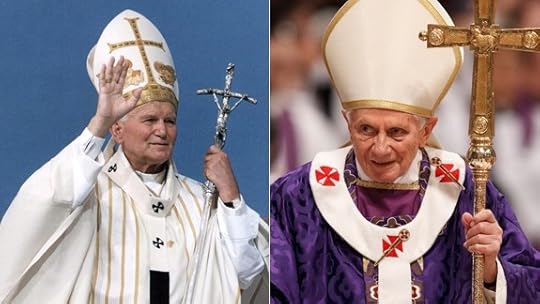
What is Social Justice? From John Paul II to Benedict XVI | J. J. Ziegler | CWR
The third and final installment in a series on social justice in Catholic social doctrine
When
the Italian Jesuit Father Luigi Taparelli D’Azeglio (1793-1862) coined the term
“social justice” in the middle of the 19th century, he probably could not have
foreseen its mention in an 1894 curial document and a 1904 encyclical, nor the
importance attached to it by Pope Pius XI (1922-39) and subsequent pontiffs,
culminating in the authoritative teaching on social justice in the Catechism of the Catholic Church (1992).
After
the Catechism’s promulgation, Blessed John Paul II (1978-2005) continued to speak
about social justice. In a 1993 audience devoted to priests and politics, he said that
“Jesus formulated the precept of mutual love, which implies respect for every
person and his rights. It implies rules of social justice aiming at recognizing
what is each person’s due and at harmoniously sharing earthly goods among
individuals, families and groups.”
John
Paul taught that as priests follow the “precept of mutual love” which “implies
rules of social justice,” they must do so in different ways from the laity.
Strongly affirming the teaching of the 1971 Synod of Bishops, which was devoted
in part to justice in the world, John Paul said that
in circumstances in which there legitimately exist different
political, social and economic options, priests like all citizens have a right
to make their own personal choices. But since political options are by nature
contingent and never in an entirely adequate and perennial way interpret the
Gospel, the priest, who is the witness of things to come, must keep a certain
distance from any political office or involvement.
Quoting
the Catechism, Blessed John Paul
added that “it is not the role of the pastors of the Church to intervene
directly in the political structuring and organization of social life. This
task is part of the vocation of the lay faithful, acting on their own
initiative with their fellow citizens.”
In
his 1994 apostolic letter Tertio Millennio Adveniente, John Paul taught that social
justice has its deepest roots in creation and in the institution of the jubilee
year, described in Leviticus 25. “The
riches of Creation were to be considered as a common good of the whole of
humanity,” he wrote. “Those who possessed these goods as personal
property were really only stewards, ministers charged with working in the name
of God, who remains the sole owner in the full sense, since it is God’s will
that created goods should serve everyone in a just way. The jubilee year was meant to restore this
social justice. The social doctrine of the Church, which has always
been a part of Church teaching and which has developed greatly in the last
century, particularly after the Encyclical Rerum Novarum, is
rooted in the tradition of the jubilee year” (no. 13).
In
his 1995 post-synodal apostolic exhortation Ecclesia in Africa, John Paul called for “a serious
commitment to foster on the continent conditions of greater social justice and
good government”—or, as the Latin text literally states, “conditions of greater
social justice and the more just exercise of power”—“in order
thereby to prepare the ground for peace” (no. 117). “If you want peace, work for justice,” he
added, quoting Paul VI’s well-known statement.
Two
years later, in an address to Philippine bishops, John Paul further developed
Catholic teaching on social justice by explicitly linking social justice to the
defense of the family.
Continue reading on the CWR site.
July 25, 2013
The Role of Doctrine in Inspiring Believers to Moral Greatness
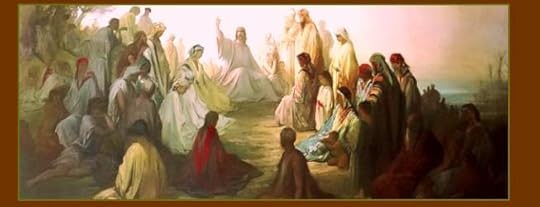
The Role of Doctrine in Inspiring Believers to Moral Greatness | Fr. Daniel Richards | HPR
In order to demonstrate this essential coexistence of nature and grace in the life of the Church, and the life of the believer, it must be shown that doctrine is necessary for salvation, not superfluous, but essential to the Church’s mission given by Christ.
St. Robert Bellarmine proposed as a mark of the true Church the
efficacy of doctrine in inspiring believers to moral greatness. That
this should be so is due to the hypostatic nature of the Church, which
is the body of Christ. Human and divine, it is necessary that members of
the Church, if they are to live in full unity with God and one another,
be transformed through that same mode of existence, inflating neither
at the expense of the other. In order to demonstrate this essential
coexistence of nature and grace in the life of the Church, and the life
of the believer, it must be shown that doctrine is necessary for
salvation, not superfluous, but essential to the Church’s mission given
by Christ. Secondly, it must also be shown that, of itself, doctrine is
inefficacious without the subjective element of faith that makes it
salvific. From the proper delineation of doctrine established by the
above, the role of the Church in proposing doctrine for belief becomes
clear. Finally, the dynamic of faith and action comes forth, by which
the believer is indeed inspired to moral greatness.
Whereas in the natural sciences, purpose is self-evident, inquiry
finding its justification in the results, the sacred sciences can seem
arbitrary to the one whose assent is demanded. What does it matter
whether Jesus Christ was God-made-man, man-made-God, or one appearing to
be the other, so long as I believe in Jesus Christ and, therefore, am
saved? Certain consequences of opposing belief can be demonstrated, but
given that there is much more we cannot know than that which we can, it
seems complete certainty will always evade us. 1 To
espouse this position does avoid the rightly eschewed narrowness of
dogmatism, but at the cost of leaving theological inquiry stunted, and
ultimately, the life of faith, short-sighted.
This work of codifying, clarifying, and amplifying doctrine is the
task of theology. Its justification, however, is not found in the
result, the action that follows inquiry. St. Thomas Aquinas addresses
this point in his Summa Theologiae. 2
It is objected that sacred doctrine is a practical science, since it is
not enough only to hear the word, but also to act upon it. While
admitting the truth of this point, St. Thomas clarifies that the action
following sacred doctrine is subordinate to the primary object which is
God. The primary concern of doctrine is not the created world, but the
uncreated God, after which it is able to treat of the created world and,
only then, have practical consequences.
Continue reading on the HPR site.
Carl E. Olson's Blog
- Carl E. Olson's profile
- 20 followers



